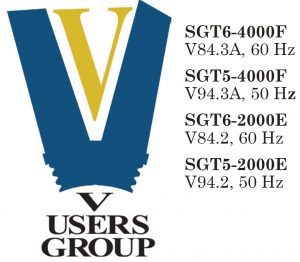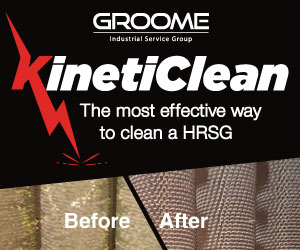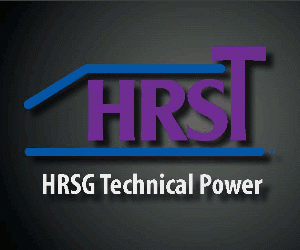The SGT6-4000F and SGT6-2000E owner/operators each met in private for about five hours on the third and final days of the conference to cover topics not addressed by the Siemens speakers and to compare notes on their experiences with the OEM and other vendors. Brief notes on subjects discussed, best practices, lessons learned, experiences both good and bad, etc, are presented below to provide a flavor of what others are thinking/doing.
User characterization. A recent poll of V User Group meeting attendees provided the following insights:
- A typical meeting will have an audience with about 30% first-timers.
- Most important topic on the minds of users is performance improvement (mentioned by 43% of attendees).
-
-
- Next came parts availability (a concern of one-third of the attendees).
- Operational flexibility (24%), outage interval extension (24%), and availability of technical support (22%) followed and were statistically equal in degree of importance.
- Last was emissions improvement (3%).
-
-
- HEPA filters are installed on gas turbines at 30% of the plants represented at the meeting.
- As for age of electronics/controls for SES/SFC: 41% less than 10 years, 53% 10-20 years, and 6% more than 20 years. More than 60% of the users have been told their controls face obsolescence, but one-third are not satisfied with their options.
SGT6-4000F
Air inlet section. One user reported plugging of pre-filters in cold weather by hoar frost. Suggestion: Use leaf blowers as a stop-gap solution before the unit shuts itself down. Brief comments on pre-filters continued with some attendees touting disposable filters, others cleanable. Change-out of pre-filters was said to take two to three hours. The OEM reportedly told one plant not to install pre-filters in the winter.
Inlet-guide-vane fluctuations were said by one user to increase EOH, likely attributable to dynamic load. His site operates multiple units on crude oil and all are affected. Recommendation: Arrange for Siemens tuners to visit the site. A short discussion related to IGV performance improvement for load increase without fuel increase ensued.
With several upgrades ongoing at one site, staff wanted to be sure all drawings and manuals were updated. Suggestion was to put this in the contract and withhold 10% payment until updates were verified.
Wet compression discussion rambled a bit: filters failing prematurely, limitations on run time when compressor blades are uncoated, erosion not a concern but corrosion is, borescope annually to determine airfoil impacts if any.
Turning-gear talk among attendees revealed issues with the dog-bone seal on the turbine bearing at one plant, plus the need to check and adjust lift-oil pressure, and hose condition, periodically. Nothing lasts forever.
Unit trips (three times in one weekend) were traced to a 20-year-old transducer for a generator protection relay. Next, a vibration issue emerged. Siemens was said to have recommended a rotor de-stack. A user recommended that generator fan blades be checked tight.
Fire-suppression agents and systems piqued audience interest as they have at many other user-group meetings—in-person and virtual—over the last several years. Suppression agents harmful to health and the environment, as well as regulations governing their use (now and in the future), were reviewed. CO2 was touted as being an inexpensive upgrade for some, water-mist systems challenged for the inspections and hardware they require, etc. Discussion even touched on buyback programs for regulated gases. Likely a determining factor in your decision-making will be what your plant’s insurer is willing to cover.
User interest in turbine services capabilities was in evidence. There were brief discussions on blade tip grinding (allow two to three hours for one disk on person said), collector-ring grinding, and the capabilities of a coupling boring machine.
Supply-chain challenges and approaches filled air time as owner/operators shared ideas and experiences regarding the purchasing of castings in advance of need, improvements to forecasting process and tools, lead-time optimization, new-stock optimization, impediments to international business, etc.
Recent outage findings included the following:
- Generator stator rewind will change from GVPI to SVPI unless performed at site.
- Laser cleaning tool is used during an onsite stator rewind.
- A dynamic cooling mod is available for generator cooling system.
- One plant reported cracking on both generator retaining rings during a recent inspection.
- FAST Gen does not include retaining-ring inspection and testing.
- Hybrid rotating grid stabilizer conversion solution: integrate a SSS clutch.
T3000. Most current version is 8.2 SP4, which will be supported until 2028; Version 9.3 is scheduled for release in 2023.
Lifecycle of ET200M ends in 2023, although at least one user said Siemens would provide spare-part replacement modules for 10 years beginning in 2023. There was discussion of the benefits of making the ET200M modules obsolete, although some users were clearly frustrated for having to replace them with newer equipment and not sold on the benefits. This segment of the audience stressed the desire for Siemens to justify its position.
Lead times on control-system parts are becoming a concern, some participants said. The result: Plants are forced to have spare parts on hand for all control-system components—including Vibrometer.
SP6 was batted around in discussion, including burner upgrades, downstream SCR, fuel-gas preheat, etc, but the information provided was much the same as Siemens Energy had presented in its session on the 4000F.
A Vibrometer D3000 upgrade was discussed. It was said that communication is sometimes lost between the D3000 and controls and when that happens a proven fix is to disable dynamic monitoring, pull the card, and then reinsert. One user said he was looking at upgrading the plant’s BN3500 rack to Vibrometer’s, noting that the existing cables and probes can be retained.
Fuel-gas system issues generated vibrant discussion. Here are some of the points made:
- Parts received from the gas-valve supplier were unsatisfactory. Specifically, cage not manufactured correctly, with holes too far down on the radius, causing the unit to trip on startup. Temporary solution was to reinstall the old cage.
- Blowbacks were a problem at more than one plant. One user said they were occurring about every four starts. A fire blanket was cut up and tied to piping to mitigate effects.
- A recommendation was made to test-fire ignitors. Suggestion was to turn off lights in the enclosure when doing this. Ignitor mods to consider: resistor and mounting. Parts challenges? Someone mentioned that spark-plug ignitors share some parts with snowmobile spark plugs.
Turbine section. Discussion focused on plant experiences with OEM alternatives for V84 outage and parts support. No one in the room could recall having full-service experience with any third-party supplier, suggesting that colleagues might want to discuss that possibility with MD&A, Sulzer, and EthosEnergy Group.
A general discussion touched on the following:
- Tile inspection. Observation: Interesting how different inspectors fail different amounts of tiles.
- Rotor de-stacks have been done at some plant sites. Normally, Siemens Energy does this work in its shops.
- Missing studs in the exhaust diffuser promote insulation liberation. You certainly don’t want that material in the SCR. A temporary solution when insulation goes downstream might be pumpable insulation.
- Other topics discussed included replacement expansion joints, windows for switchgear, leak-checking of TEWAC heat exchangers, generator flux-probe testing, transformer issues, failure to start, automatic-drain problems with knock-out drums in fuel-gas systems, benefits of performance heaters for fuel-gas systems, replacement of peckerhead-style exhaust thermocouples, and much more.
Insurance company requests. Add fire suppression capability to a hydrogen-cooled generator pit, install fire protection in the PCC sub floor, develop emergency operation procedures—such as for low lube-oil pressure, conduct a cybersecurity deep dive, and install FyreWrap® around dc lube-oil pump wiring.
SGT6-2000E
Fuel-gas control. Several users said they had, or were planning to, upgrade their fuel-gas controls with Rexa Inc equipment because the Argus® valves (Flowserve) installed were problematic.
CVC 1. Safety issues were reported with this generation of compressor vane carriers. Solutions identified: Install a safety bracket (viewed as a temporary fix) or replace.
Combustor issues were traced by some to changes in gas quality causing liquid carryover. Sulfur has been found plated-out in gas lines (hard, light-gray color); plus, there have been reports of heavy hydrocarbon buildup in those same lines. One reason is believed to be receipt of fracking gas instead of the traditional Gulf gas. Suggestion: Heat the incoming fuel to 165F.
Dual-fuel operation. Issue of greatest concern is fuel quality, with some users challenged during commissioning of fuel-oil systems after major outages. Most users reported having upgraded successfully to HR3 burners from H burners.
Emissions control. Issues with NOx steam injection line reported. Recommendation: Keep water in the line during light-off to reduce the risk of distorting/melting the line.
Turbine-section comments were generally positive, such as:
- Blades robust. One user with 32k first-stage blades is at more than 50,000 hours and still running. Another is targeting 46k EOH; no concern with starts. Limiting factor is likely the transition rings, which can be patch-repaired to limit outage time.
- Most users agree that blades can handle two repair cycles with the repair process the determining factor.
Inner-casing cracks. Some users just monitor condition; others weld-repair at outages.
Tiles. Horizontal cracks are not of concern to most users, but vertical cracks are examined closely. Some users reported using Sulzer for tile work; others their own techs with Sulzer support for condition evaluation.
Outage planning. Siemens Energy TMS (Total Maintenance Services) process used to start 18 months prior to the planned outage, now two years. Group experience regarding auxiliaries during a major: Change out all valves at third major; all shut-off valves sent to Millennium Power Services for overhaul, actuators to Paragon Technologies. Tip: Borescope three-way valves after maintenance to be sure they are installed correctly.
Second-major recommendations: Don’t replace flame tubes, repair tiles and tile holders, check F rings and bezel rings, refurbish thermal barrier coatings on hot plates and bezel rings.
V Users Group 2022
2. OEM and users discuss product lines, common issues
3. SGT6-4000F Fleet Engineering Update





